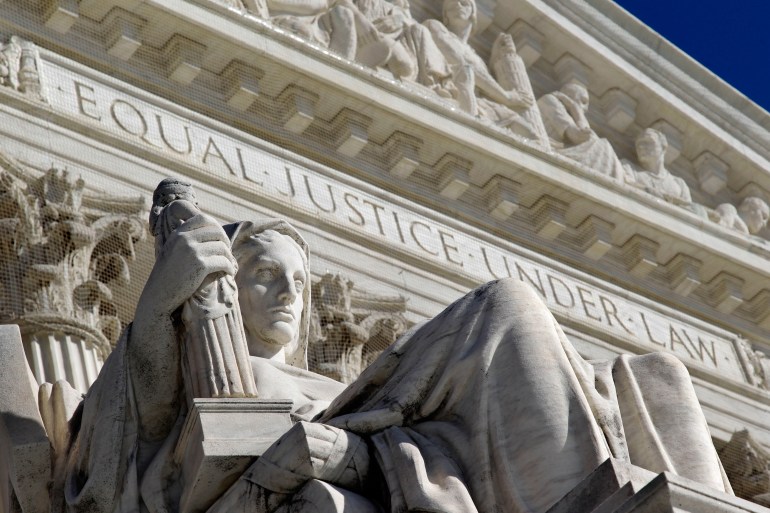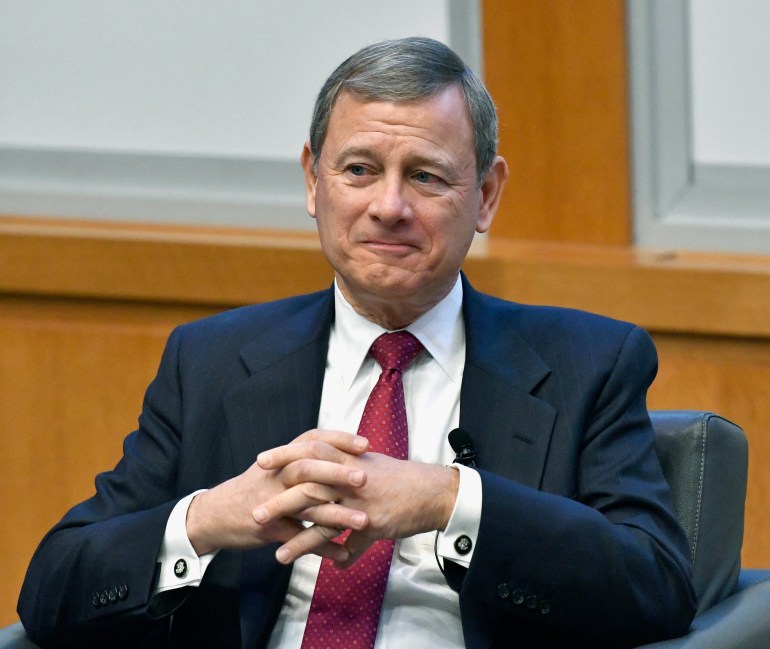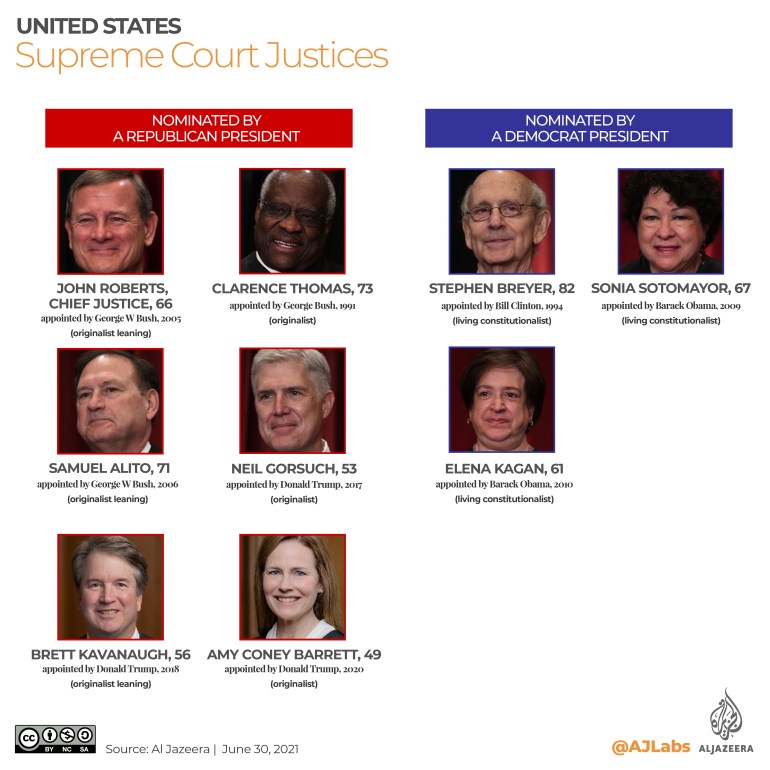
[ad_1]
You won’t find any T-shirts featuring Justice Stephen Breyer’s face.
That’s a contrast to the late Supreme Court justice, Ruth Bader Ginsburg, who generated something of a fan base among liberals (that is, as much of one as an elderly jurist can muster) with not only her image appearing on shirts, but also buttons and other political paraphernalia.
Ginsburg gained this quasi-celebrity status for her unapologetic feminism, which she displayed in her public and private life. As a judge on the Supreme Court, she made the news on occasion for her blistering dissenting opinions on such matters as reproductive rights and the gender pay gap.
Now, Justice Breyer, who served as assistant special prosecutor on the Watergate Special Prosecution Force in 1973 and is known for mostly taking liberal positions in his opinions, has also found the spotlight. The reason? His age.
There have been calls for the 82-year-old judge to retire – not because of any loss in his faculties, but out of a fear that history may be repeated.
If we remember, in what seems like light years ago now, Justice Ginsburg unexpectedly died on September 13, 2020 after serving 27 years on the court. “Unexpectedly” may not be the right word, as Ginsburg was 87 years old and had cancer.
Liberals had called for her to retire back when Barack Obama, a Democrat, was president. If she had retired at that time, then the Democrats would have had the chance to claim a victory over conservatives by placing a judge with progressive credentials onto the court. But Ginsburg resisted.
Then Trump was elected, and, well, got to score a win for the Republicans by selecting a conservative justice – Amy Coney Barrett – to the highest court in the land after Ginsburg’s death. In fact, Trump got to select three justices – the most in one term since Richard Nixon – tilting the Court to the right for a generation.
Trump is no longer president, but Barrett, Neil Gorsuch and Brett Kavanaugh are still Supreme Court justices. At 49 years old, Barrett is the youngest on the court.
Her nomination was controversial at the time, as Republicans seemingly rushed her appointment through in the closing months of the Trump administration.
While a president appoints a justice, they must then be confirmed by the Senate. During the concluding months of the Obama administration, he appointed Merrick Garland to serve in place of the then recently deceased Antonin Scalia. But the Republican-controlled Senate refused to hold hearings to confirm Obama’s appointment. Without confirmation, Garland went nowhere.
When Trump won the presidency in 2016, with a Republican-majority Senate, he was able to appoint Gorsuch and have him confirmed.
Now, some Democrats fear the same thing could happen again – and with good reason. Mitch McConnell, the Republican Senate Minority leader, has already suggested that if Republicans regain control of the Senate in the 2022 midterm elections, he would block a Supreme Court nominee in 2024 as it is an election year.
So leftists are trying to avoid a repeat of what happened with Ginsburg. Breyer, who is the oldest justice on the court, is being told by some Democrats and other liberals that he needs to step aside. If Breyer retires now, then Biden – who has pledged that his first nominee to the court will be a Black woman – will have ample time before the Democrats potentially lose their majority in the Senate in next year’s midterms, to select a liberal justice to replace him.
There is lots to unpack here, not only with the situation surrounding Justice Breyer, but also with the general political drama that surrounds the US Supreme Court.
 United States Supreme Court Justice Stephen Breyer speaks to an audience at the French Cultural Center in Boston in February 2017 [File: Steven Senne/AP Photo]
United States Supreme Court Justice Stephen Breyer speaks to an audience at the French Cultural Center in Boston in February 2017 [File: Steven Senne/AP Photo]
To start, the court is somewhat of an outlier when compared with similar institutions in other countries.
Canada, the US’s neighbour to the north, also has a Supreme Court, but with a mandatory age – 75 – at which justices must retire. The US’s other neighbour, Mexico, has a Supreme Court, but there, the appointed and confirmed judges have 15-year term limits.
In the US, justices – of which there are nine – are appointed for life. Currently, there are three living former Supreme Court justices (Sandra Day O’Connor, Anthony M Kennedy and David H Souter) who have decided to retire instead of die in office. They all retired for their own personal reasons, as there are no rules concerning when a justice must leave the court. Moreover, throughout US history, just as many justices have died in office as have retired.
Taking a ‘liberal’ slant
What makes US justices so important is that, with the power of judicial review, they are tasked with deciding the constitutionality of laws and statutes. Or, in other words, policies which have origins in democratically elected legislatures must pass muster with a group of unelected jurists. For cases to reach the Supreme Court, parties who are not satisfied with lower court rulings must petition the higher court to hear their case.
With so much power and seemingly so few rules to guide succession, some have called for reform of the Supreme Court. Specifically, there have been calls from the left to increase the number of judges from nine to thirteen.
Still, the bigger issue is how the court finds itself at the centre of entrenched ideological battles between liberals and conservatives. Justices tend to be seen by the public as either liberal or conservative, as if they were members of competing political factions. Leftists are concerned, especially of late, with Trump-era justices swinging the court to the right, and potentially ruling against a woman’s right to choose to have an abortion.
Such fears may have certain reasoning behind them, with six of the nine judges currently serving having been appointed by Republican presidents.
In this mix, Breyer is considered a liberal voice, which is part of the reason that Bill Clinton nominated him to serve back in 1994. In terms of proving his liberal credentials, Breyer has sided with progressives on many key issues.
 A detail of the west façade of the US Supreme Court in Washington, DC [File: J. Scott Applewhite/AP Photo]
A detail of the west façade of the US Supreme Court in Washington, DC [File: J. Scott Applewhite/AP Photo]
For instance, in District of Columbia v Heller (2008), he dissented with three others from the five-judge majority who decided that the second amendment included the right for individuals to bear arms independent of serving in a militia.
As guns have become one of the country’s focal points, promoted by Republicans and guns rights groups such as the National Rifle Association (NRA), Breyer is one justice who sees the need to restrict rather than expand gun rights.
He has also penned decisions that have drawn praise from environmental groups. For example, he concurred with the seven-judge majority in Friends of the Earth Inc v Laidlaw Environmental Services (2000). This case allowed residents near the North Tyger river, in the state of South Carolina, to sue an industrial polluter even when harm was neither direct nor immediate.
Breyer has also stood for women’s reproductive rights. The most recent example was his decision to side with the five-judge majority and write the opinion for June Medical Services, LLC v Russo (2020).
In this case, a Louisiana law that placed restrictions on abortion doctors was struck down. Specifically, the law would have allowed for just one doctor per state. This would have provided for other states to pass similar laws.
 US Supreme Court Chief Justice John Roberts prepares to speak in Lexington, Kentucky in February 2017 [File: Timothy D. Easley/AP Photo]
US Supreme Court Chief Justice John Roberts prepares to speak in Lexington, Kentucky in February 2017 [File: Timothy D. Easley/AP Photo]
In another important case – Eldred v Ashcroft (2003) – which sought an extension to copyright terms, Breyer wrote one of the two dissenting opinions, arguing that too much favour had been granted to corporations and too little to the public.
The ‘living document’ versus ‘originalist’ debate
Breyer also interprets the Constitution as a “living” document or, rather, as one to be interpreted considering current events and developments. This contrasts with the “originalist” view, under which the wording of the Constitution should be applied literally, as it was when it was first written. To originalists, any changes to the meaning of the Constitution must be adopted formally via amendments.
To illustrate, living constitutionalists would see racial segregation as constitutional in the period following the US Civil War until when the Civil Rights Movement emerged due to changing social norms. As public opinion and events go, so go interpretations of laws in light of the Constitution. Originalists see amendments such as the fourteenth amendment, which provides for equal treatment of all citizens regardless of racial and other forms of discrimination, as definitive. So, if the amendment and its text were to be removed, so would a judge’s reasoning on the merits of a case pertaining to discrimination.
Originalists are commonly believed to hold conservative views. According to this group, the intent of the founding fathers – “the framers” – is critical when it comes to making decisions. The late justice Antonin Scalia, who was considered a conservative and an originalist, debated publicly on the issue back in 2016. He said: “There are those who think the Constitution is to be interpreted in such a way as to keep it up to date. That is to say, it does not mean today what it meant when it was adopted. Some of its provisions change in order to keep up with the times. My friend Justice Breyer has that view. The other view, which is held by people called originalists, and I’m one of them, is that the Constitution doesn’t change. If you want to change it, there is an amendment provision. Amend it. It’s not up to the Supreme Court to write a new Constitution by deciding that things that never were there all of a sudden are there.”
As such, originalists tend to be more backwards-looking than others who interpret the Constitution as a living document. Or rather, while precedent is critical for both, originalists would disregard current developments in light of the laws and amendments that have come into existence through the long, drawn-out process of crafting legislation.
Still, even when taking into consideration this track record and mode of Constitutional interpretation, there are a few problems in politicising the court – Breyer included – in such a simplistic left-versus-right binary.
 Supreme Court nominee Amy Coney Barrett listens during a confirmation hearing before the Senate Judiciary Committee on October 14, 2020, on Capitol Hill in Washington, DC [File: Susan Walsh/AP Photo, Pool]
Supreme Court nominee Amy Coney Barrett listens during a confirmation hearing before the Senate Judiciary Committee on October 14, 2020, on Capitol Hill in Washington, DC [File: Susan Walsh/AP Photo, Pool]
First, there is history.
For instance, it is worth noting that the author of the Roe v Wade (1973) decision – Harry Blackmun – was a Nixon appointee. Nixon, of course, was a Republican. And Roe has set the stage for decades of debate on reproductive rights, granting a woman the constitutional right to choose to have an abortion.
Looking at other critical decisions shows similar dynamics.
There is Justice Roberts – a George W Bush nominee – who wrote the opinion and sided with four other judges to keep the Affordable Care Act (otherwise known as Obamacare) on the books.
We have seen similar interesting moves by Gorsuch, a Trump appointee. Gorsuch sided with four other justices and wrote what is perhaps the most critical Supreme Court opinion in the past few decades concerning tribal sovereignty. In this case, McGirt v Oklahoma (2020), the court upheld the rights of the Mvskoke nation to try its members for certain crimes instead of the state of Oklahoma.
Most recently, in The National Collegiate Athletic Association (NCAA) v Alston (2021), the court issued a unanimous decision in favour of NCAA athletes. Basically, college athletes receive no compensation as coaches and TV networks rake in the profits from advertisers. Sounds fair? If it does not, then you agree with the US Supreme Court.
Economic justice. Indigenous people’s rights. Supporting health care reform. Such matters are not typically associated with US conservatives.
 The US Supreme Court Building in Washington, DC [File: J. Scott Applewhite/AP Photo]
The US Supreme Court Building in Washington, DC [File: J. Scott Applewhite/AP Photo]
Besides this brief survey of important cases that call into question a simple, cookie-cutter political categorisation, Breyer himself has made certain positions known that are not to the left of the aisle.
In National Federation of Independent Business v. Sebelius (2012), he sided with conservatives in allowing states to choose whether to accept the Affordable Care Act’s Medicaid expansion. Essentially, this decision allowed states to reject federal resources that would have provided healthcare coverage for low-income Americans. And, in Maryland v King (2013), Breyer also sided with those on the right in upholding the power of the police to conduct DNA testing at the time of arrest. Extending police powers – especially now – is not a position common among many liberal proponents.
Breyer has also expressed a “technocratic” view of judges and the law. Basically, his idea is that judges stand outside of politics, having the capacity to keep their political leanings at bay as they evaluate cases. Such a view may be considered naïve, or worse, hierarchical and elitist.
Overall, Breyer’s history is mixed. But so is much of the history of the US Supreme Court, with decisions carrying much weight, yet the operations of the institution not fitting neatly onto a right/left political spectrum.

[ad_2]
Source link